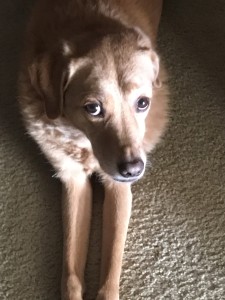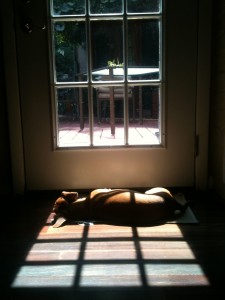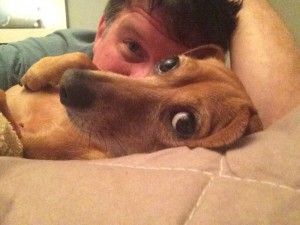Michael Baugh CDBC CPDT
We do our best teaching (training) when we set our dogs up to succeed. We make it easy for our dogs to get it right – to perform the tasks we want to reinforce. Once we build some momentum we increase the difficulty, but not before.
 As trainers, we want to do the same thing for ourselves. Let’s set ourselves up to succeed by eliminating the stuff that get in the way of good solid learning. They are the distractions and interference that slow us down or even derail our teaching efforts. I call them training fouls. Here’s my short (but not exhaustive) list of the worst culprits of training fouls. Don’t fall victim and, please, don’t get flagged for a training foul yourself.
As trainers, we want to do the same thing for ourselves. Let’s set ourselves up to succeed by eliminating the stuff that get in the way of good solid learning. They are the distractions and interference that slow us down or even derail our teaching efforts. I call them training fouls. Here’s my short (but not exhaustive) list of the worst culprits of training fouls. Don’t fall victim and, please, don’t get flagged for a training foul yourself.
The Session Thief. This is perhaps one of the most common fouls. A trainer is in a session with her dog. Perhaps the dog is a bit slow to respond to a cue. Then, another well-meaning person jumps in with another cue and steals the session. You can see how this would confuse our dog and frustrate the first trainer. Don’t be that person. And, don’t let others foul you in this way.
The Dog Shamer. Nothing kills training like someone making you feel bad about how you are raising your dog. This foul may come as a surprise. After all, it’s my job to help get folks back on course with teaching their dogs. But, giving professional advice and guidance isn’t the same as making someone feel like an idiot. Don’t shame your fellow dog lovers – they are doing the best they can with the information they currently have. And if you want to be helpful to someone else, be helpful. Leave the criticism and same on the other side of the foul line.
Whispering Uncle Buddy. We all have a friend or relative like this. Our dog is sensitive to new people he doesn’t know well. Maybe he’s even bitten before. But our kind-hearted (but bumbling) friend or relative is certain our dog will love him anyway. “I have a way with dogs.” “All dogs love me.” “I’ve had dogs all my life.” Sigh. These are most often the folks who get bitten. They feel bad. We feel bad. They are walking, talking, smiling, training fouls. Certainly don’t be that person. And keep that person away from your dog.
The Alpha “Expert”. This guy (and it’s usually a guy, sorry) might also be an Uncle Buddy (see above). He may not a dog trainer by profession, but he’s seen lots of TV shows on dog training and maybe a few YouTube videos. He knows how to show a dog who is boss – how to make him mind – and he certainly knows more that the trainer you’re working with. Foul. I already know you are not that person. Don’t let The Alpha “Expert” confuse you about how to teach your dog. And please, don’t let him hurt your dog in the name of training.
The One-More-Timer. This is a training foul we most often do to ourselves. A learning session is going exceptionally well. Our dog seems to be grasping the concept and that last rep was perfect. We’re so proud we want to see it just “one more time.” Stop. Record the win and take a break. “One more time” is the curse of great trainers worldwide. Don’t foul your dog (or yourself). Celebrate the success and end on that note for the time being.
Most of these folks are just humans, like you and me, trying their best. Be firm with them, but kind. Help them become better teachers and dog lovers, just as you have become. We are all learning. And we all know the learning comes faster and easier when the humans involved are patient, relaxed, and clear thinking.
Learn. Smile. Breathe. Teach. Repeat.
Michael Baugh teaches dog training in Houston, TX. He specializes in behavior related to fear and aggression in dogs.



